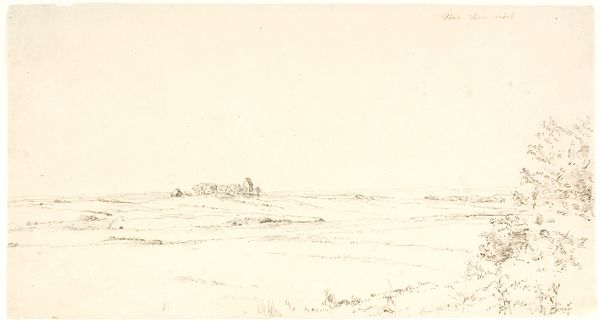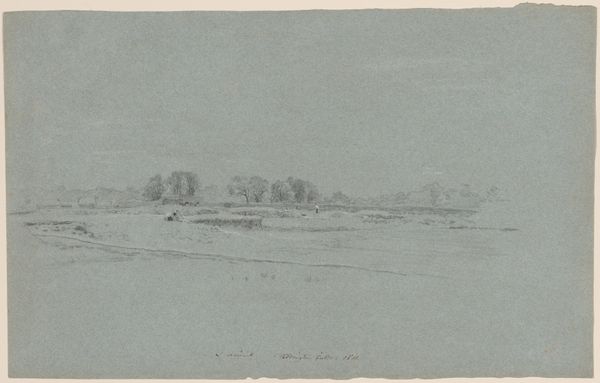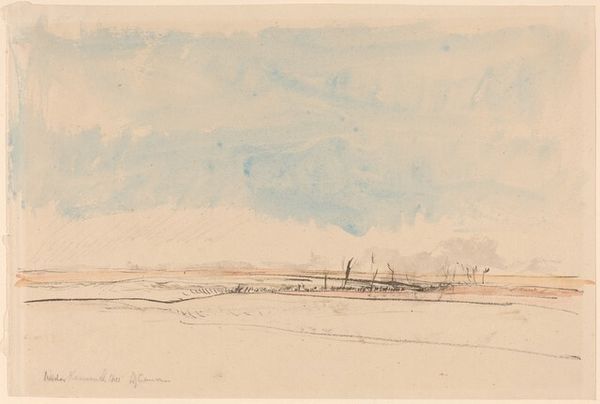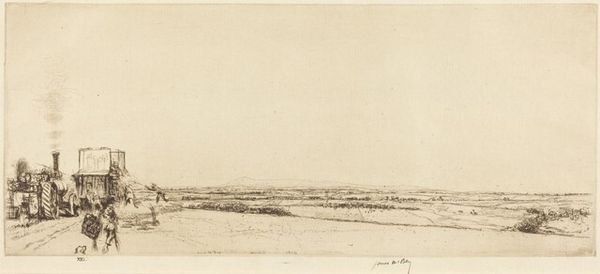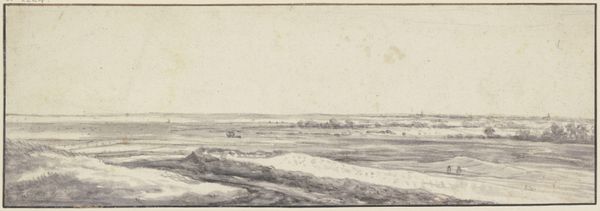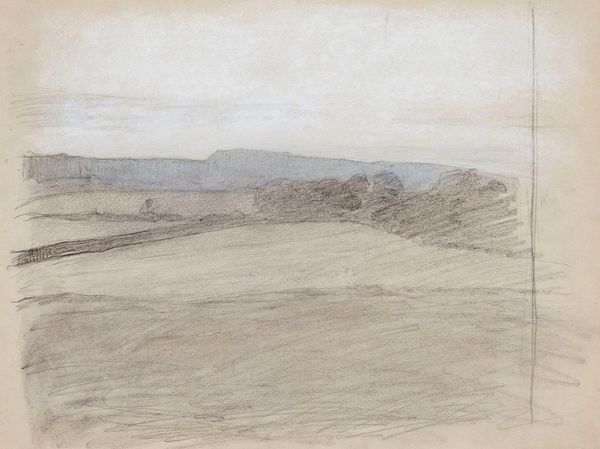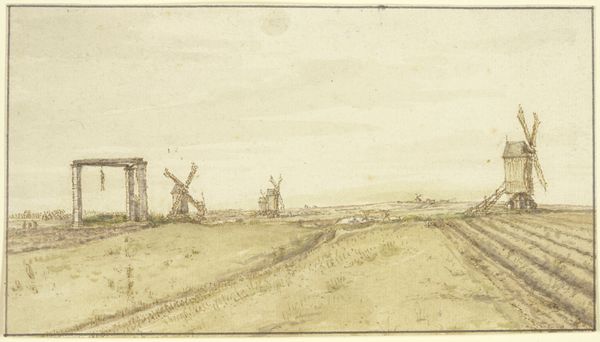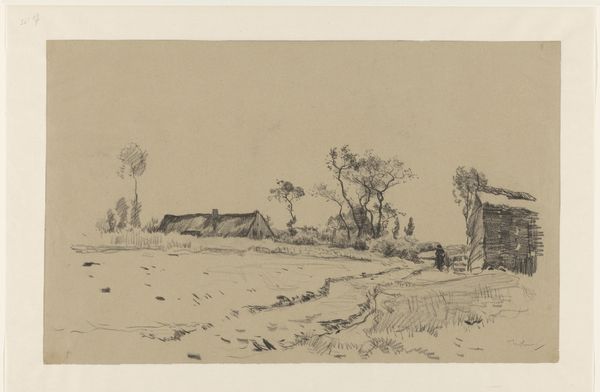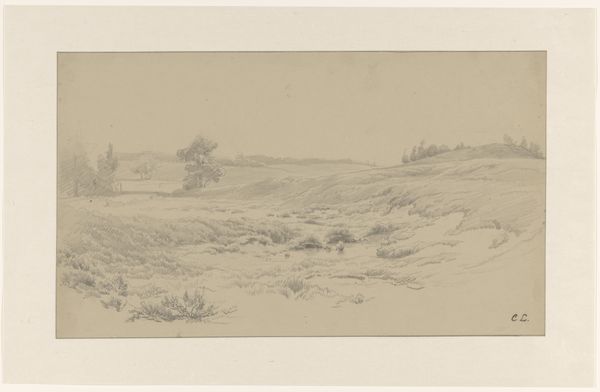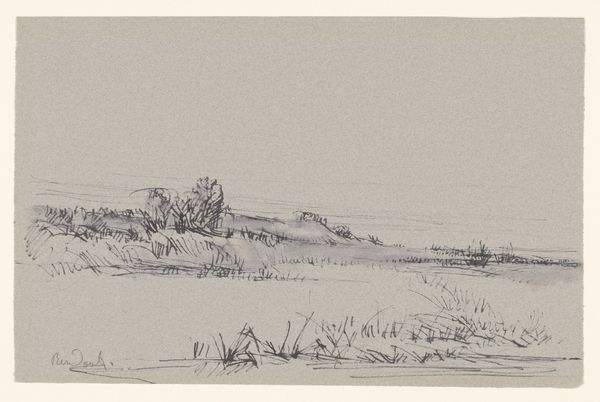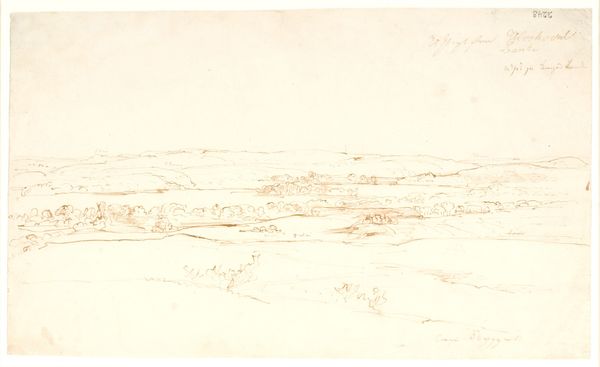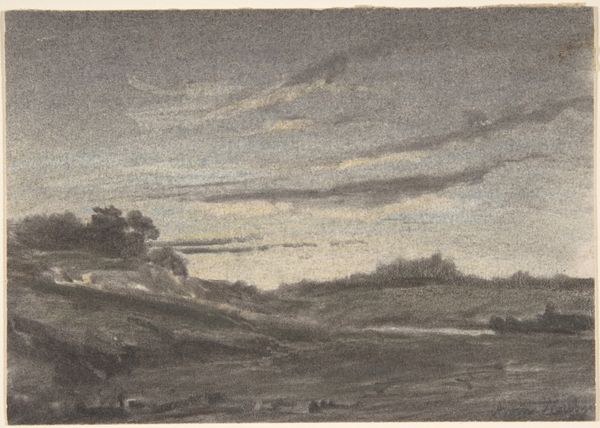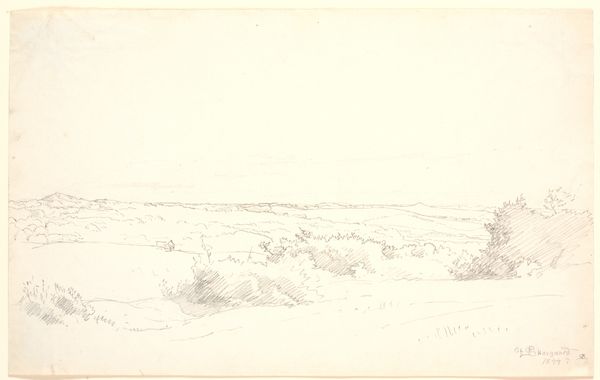
drawing, pencil
#
drawing
#
landscape
#
ancient-mediterranean
#
pencil
Dimensions: sheet: 20.32 × 32.7 cm (8 × 12 7/8 in.)
Copyright: National Gallery of Art: CC0 1.0
Curator: This is "Nile Journey, Colossi of Memnon," a pencil drawing created around 1890 by Elihu Vedder. Editor: There’s an airy, almost melancholic mood here, mostly muted colors and very soft textures across this broad landscape. The monuments are really small and stark within that context, which is interesting. Curator: Absolutely. The formal aspects create that. The broad strokes of green across the field serve to emphasize the sheer scale of the place, drawing the viewer's eye to those distant structures and drawing contrasts to them with tonal variation and linear perspective. Editor: Yes, and if we situate Vedder's journey historically, we see a common fascination of Western artists visiting and depicting these ancient sites. This ties into 19th-century orientalism and colonial narratives. What was Vedder’s place in that dynamic? Curator: Vedder spent a great deal of time in Europe, especially Italy. One sees how he utilizes compositional balance, distributing weight across the drawing through varied density of the applied graphite and the contrast between the foreground elements. How might one decode these placements through semiotic methods? Editor: Certainly the placement encourages a reading. This almost looks like a picturesque postcard souvenir, mass-produced and disseminated to validate an idea of conquest through culture as it traveled among Europeans. Curator: Yes, the function of creating meaning is present in this artwork; yet if you view the formal interplay alone, you still have dynamic aesthetic interest in form itself, and without such interest how might Vedder communicate anything at all? Editor: I appreciate that consideration of function, although I can't deny how the artwork is entangled in complex narratives of the time period it emerged from. I mean, art and historical meaning – you rarely get one without the other, even formally. Curator: And a final moment appreciating the function, here; I'll need a Nile journey myself now! Editor: Agreed, and I will reflect further on our discussions to better grasp the intersection of aesthetics and context. Thank you!
Comments
No comments
Be the first to comment and join the conversation on the ultimate creative platform.
